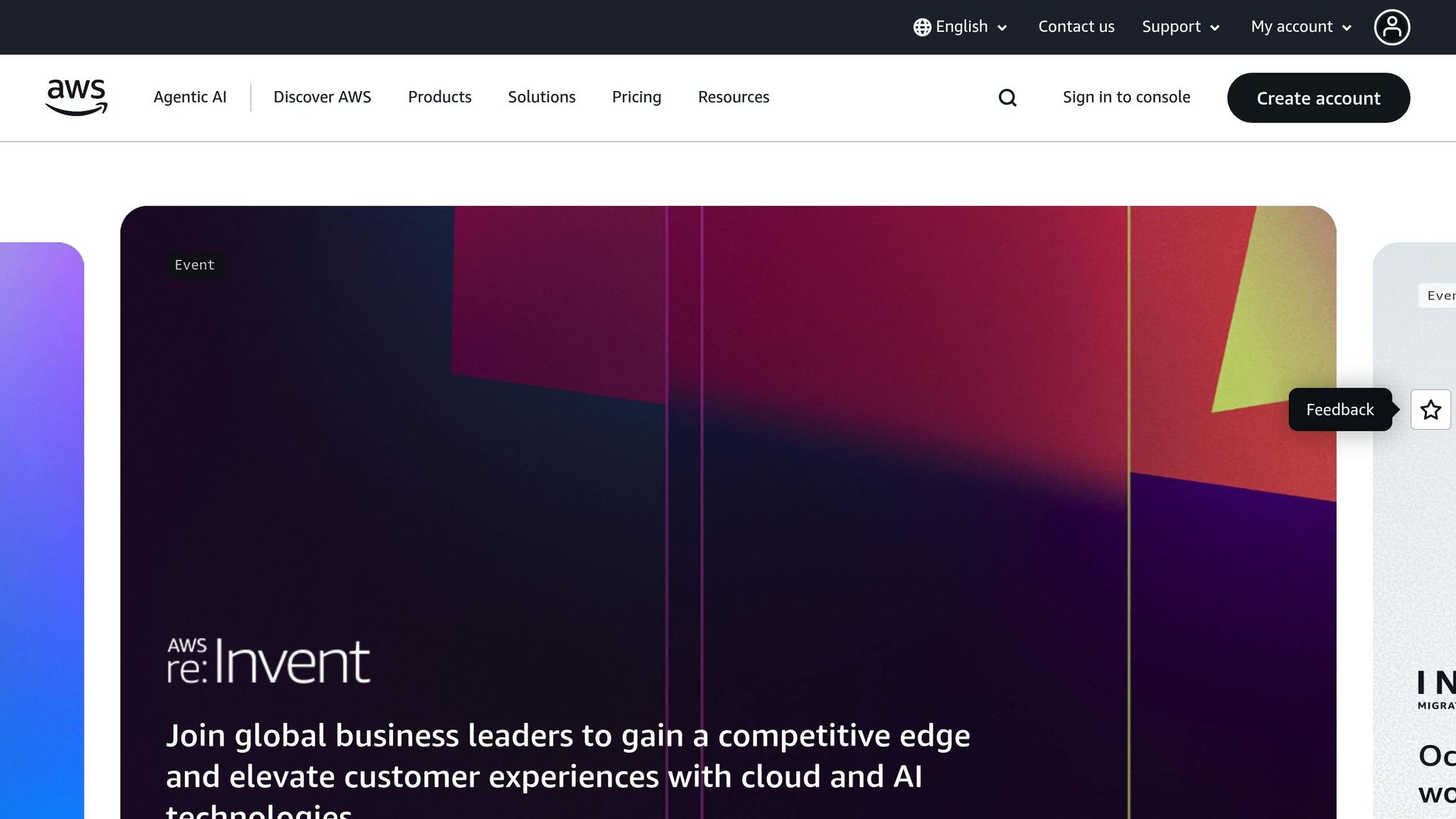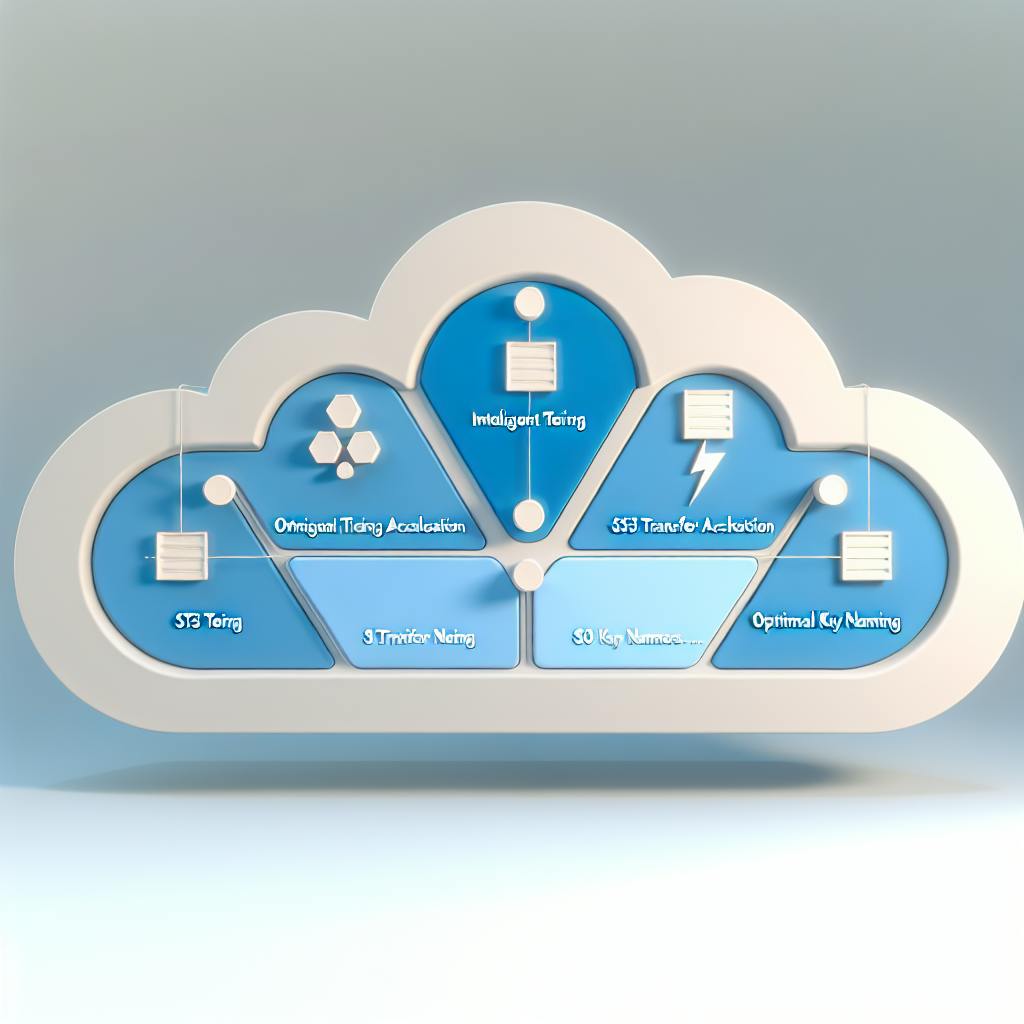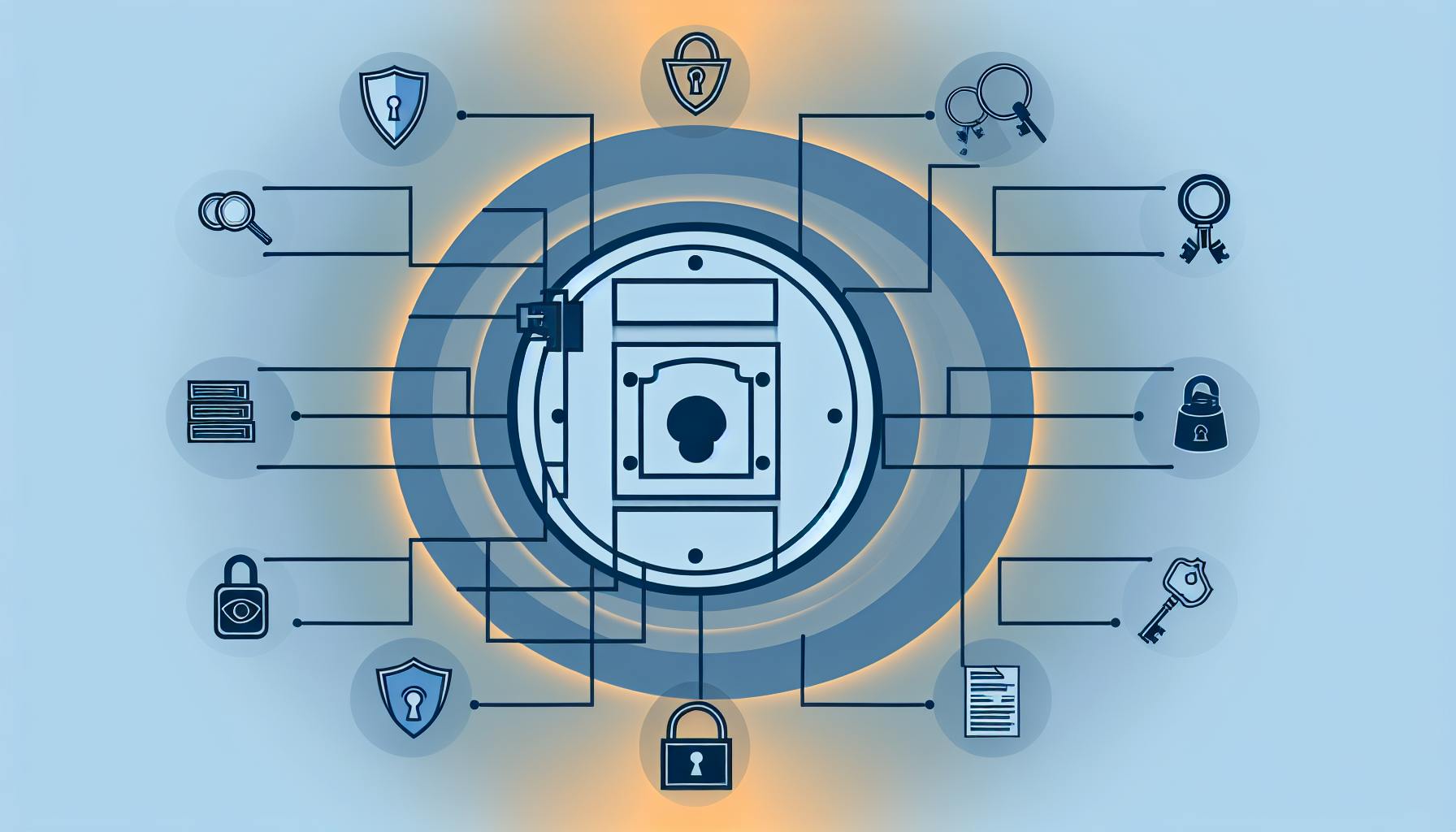Migrating to AWS can modernize your systems, but compliance is a critical challenge you cannot ignore. Here's what you need to know:
- Compliance is your responsibility under AWS's shared responsibility model. AWS secures the infrastructure, but you must manage data protection, access, and application security.
- Ignoring compliance risks can lead to fines (e.g., HIPAA, PCI DSS), operational delays, and damaged customer trust.
- Key regulations to address include HIPAA for healthcare, PCI DSS for payment data, GDPR for EU citizens, and SOX for financial reporting.
- Preparation is crucial: Map compliance requirements, classify sensitive data, and create detailed checklists before migrating.
- AWS tools can help: Use services like AWS Config, Amazon Macie, and AWS Security Hub to monitor and automate compliance.
The goal is to integrate compliance into your migration strategy from the start, ensuring smooth transitions and avoiding costly setbacks. Let’s dive into the steps to make this happen.
Pre-Migration Compliance Setup
Before starting your migration journey, it's crucial to lay a solid compliance groundwork. Taking a proactive stance here can help sidestep unexpected hurdles down the line. The process begins with understanding your compliance needs, classifying your data, and creating actionable checklists to guide your decisions. Let’s start by identifying your specific compliance requirements.
Map Your Compliance Requirements
Begin by reviewing AWS Compliance Programs to clarify shared responsibilities between you and AWS. A key resource here is AWS Artifact, which provides access to compliance reports, certifications, and documentation. These materials are often accepted by auditors as valid evidence of compliance efforts. Additionally, AWS Artifact offers Customer Compliance Guides that map security recommendations for over 100 AWS services to frameworks like NIST 800-53, GDPR, HIPAA, and PCI-DSS.
Keep in mind that compliance requirements vary by region. For instance, GDPR governs data privacy in Europe, while CCPA applies in California, and PDPA is relevant in Taiwan. Research the regulations applicable to each AWS Region where you plan to operate. To align your security and regulatory needs, consider conducting workshops and consulting legal experts early in the process.
"AWS customers are responsible for developing or obtaining documents that demonstrate your company's security and compliance posture." – AWS Artifact User Guide
Once you’ve mapped out these requirements, the next step is to focus on your data - specifically, identifying and categorizing it.
Classify Data and Assess Risks
Classifying your data is a cornerstone of any effective compliance strategy. Start by identifying and categorizing sensitive information such as Personally Identifiable Information (PII), Protected Health Information (PHI), payment card data, and confidential financial records. Tools like Amazon Macie can help automate the discovery of sensitive data stored in Amazon S3 buckets.
It's equally important to document data flows. Map out where sensitive data is stored, how it moves between systems, and which AWS services will handle it. During this phase, configure AWS Migration Hub to track data discoveries and group applications with similar compliance needs. Take a close look at your current on-premises security measures, policies, and tools to identify gaps. Ensure these align with AWS-native capabilities. Also, assess application dependencies, such as database connections or integrations with other services, and prioritize high-risk applications for additional security measures.
Build a Compliance Checklist
To avoid missing any details, create region-specific compliance checklists. Break down regulatory requirements into actionable technical tasks. For example, ensure proper configurations for IAM policies, KMS settings, and network security controls.
Your checklist should also include validation steps for industry standards like GDPR, HIPAA, or PCI-DSS. Plan for continuous compliance by scheduling regular monitoring, policy reviews, and audits. Use AWS tools to keep tabs on compliance resources and stay updated. Finally, consider factors like your organization’s risk tolerance, team structure, and existing security processes. Leverage resources such as the AWS Security Reference Architecture and the AWS Well-Architected Framework to keep your compliance efforts on track.
Compliant Migration Strategies
Once you've established a solid compliance foundation, it's time to fine-tune your migration approach to ensure regulatory requirements are met throughout the process. With compliance needs clearly defined and data properly classified, the next step is selecting a migration strategy that aligns with those requirements. The method you choose will play a crucial role in maintaining compliance during the transition. The goal? Pair your migration strategy with your specific compliance demands while utilizing AWS services designed to meet regulatory standards.
Choose Your Migration Approach
You have three main approaches to consider: rehosting, replatforming, or refactoring. Each comes with its own benefits and trade-offs, depending on your compliance goals and timeline:
- Rehosting: This method, often referred to as "lift-and-shift", keeps existing controls largely intact. It's a straightforward choice if you're working with tight deadlines or minimal changes.
- Replatforming: By incorporating managed AWS services, this approach automates many security and compliance tasks, streamlining the process while introducing new efficiencies.
- Refactoring: While this option requires more effort, it allows for a more detailed alignment with compliance requirements, offering greater control and precision in the long run.
Your timeline also matters. If you're racing against a compliance deadline, rehosting might be the fastest path to completion. For longer-term gains, refactoring could provide a more robust compliance framework.
Use AWS Services for Compliance

AWS services are designed to simplify migration while strengthening compliance. Key services like Amazon EC2, Amazon RDS, and Amazon DynamoDB come with built-in features such as encryption, dedicated resources, and automated backups - all essential for maintaining a strong regulatory posture.
Start by enabling AWS Config early in the migration process. This service continuously monitors your AWS resources to ensure they align with your organization's policies and regulatory standards. Using Config Rules, you can automate checks for common compliance needs, such as encrypted storage, proper IAM configurations, and secure network settings.
Another critical tool is AWS Systems Manager, which helps maintain compliance after migration. This service supports patch management, configuration tracking, and automated remediation, ensuring your EC2 instances remain up-to-date with security patches - a necessary step for most compliance frameworks.
Prioritize Systems by Compliance Risk
With your migration strategy and tools in place, the next step is to prioritize systems based on their compliance risk. This approach ensures smoother transitions and minimizes disruptions to critical operations.
- Low-risk systems: Start with systems like development environments, which typically have fewer compliance constraints. These are ideal for testing and validating your migration processes.
- Medium-risk systems: These often include customer-facing applications that handle some sensitive data but are not subject to the strictest regulations. AWS services like Application Load Balancer (for SSL termination) and AWS WAF (for web application security) can provide added protection here.
- High-risk systems: These require the most attention and careful planning. Examples include applications managing payment data (PCI-DSS), healthcare information (HIPAA), or personal data under GDPR. Services like Amazon Connect, which is HIPAA-eligible, are tailored for such high-stakes environments.
To streamline this process, create a risk-based matrix that categorizes systems by data sensitivity and regulatory requirements. For example, systems handling PII under GDPR will need different controls than those processing payment card data under PCI-DSS. This matrix not only helps prioritize the migration order but also guides resource allocation.
Interdependencies are another critical factor. If a low-risk system feeds data into a high-risk system, you may need to migrate them together to maintain compliance boundaries. Tools like AWS Migration Hub can help you track these relationships and plan accordingly.
Lastly, keep in mind that compliance challenges often grow with system complexity. Standalone applications are typically easier to migrate while keeping regulatory standards intact. In contrast, integrated systems that share data across multiple compliance domains demand extra attention, time, and resources. Be sure to account for these complexities when planning your migration timeline.
Design Compliant AWS Architecture
Creating a compliant AWS architecture is a critical step in your migration strategy. By focusing on proper data placement, robust security measures, and automated monitoring, you can ensure your setup meets regulatory standards. Key areas to address include data segregation, encryption, access management, and automated compliance validation.
Set Up Data Segregation and Location Controls
Different regulations impose varying requirements on where data can be stored. For example, GDPR mandates that EU personal data stays within approved regions, while HIPAA emphasizes access controls over geographic restrictions. Your AWS architecture should reflect these distinctions.
Start by choosing the right AWS Regions for your compliance needs. For GDPR, EU regions like eu-west-1 (Ireland) or eu-central-1 (Frankfurt) are ideal. Similarly, organizations in financial services must adhere to data residency laws by selecting regions within their jurisdiction.
To enforce geographic restrictions, leverage Amazon S3 bucket policies and controlled cross-region replication with condition keys like aws:RequestedRegion. For highly sensitive data, you can disable cross-region replication altogether or restrict it to approved regions. Amazon RDS offers similar controls through DB subnet groups, allowing high availability while keeping data within specific regions.
For network-level segregation, use Amazon VPC and Transit Gateway to isolate compliance domains and control traffic between VPCs. Configure route tables to ensure traffic flows only where necessary, keeping high-risk systems separate from lower-risk environments. This is especially useful for companies managing multiple compliance frameworks.
Once data segregation is in place, the next step is to secure it with encryption and strict access controls.
Configure Encryption and Access Controls
Encryption is a cornerstone of most compliance frameworks. With AWS Key Management Service (KMS), you can manage encryption keys centrally while applying fine-grained access controls. Create separate Customer Managed Keys (CMKs) for different compliance domains to clearly separate encrypted datasets.
Ensure encryption at rest is enabled for all storage services. Amazon S3 supports server-side encryption with KMS keys, while Amazon RDS and Amazon EBS offer encryption options for databases and volumes. Make encryption a default configuration to avoid gaps.
For encryption in transit, manage SSL/TLS certificates with AWS Certificate Manager and require encrypted connections for services like Amazon RDS and Amazon ElastiCache. Use Application Load Balancers to handle SSL termination and re-encryption as needed.
Access control is equally important. Use AWS Identity and Access Management (IAM) to enforce the principle of least privilege. Role-based access patterns should align with compliance needs, and for environments like HIPAA, implement break-glass access procedures with temporary elevated permissions that are logged and monitored. AWS Single Sign-On can integrate with your identity provider for centralized access control.
Mandatory multi-factor authentication (MFA) is a must for all privileged accounts. Configure AWS IAM to require MFA for sensitive operations, such as key management and production system access. Use AWS Organizations to enforce MFA policies across all accounts with Service Control Policies.
For auditing purposes, enable AWS CloudTrail to log API activity and use AWS Systems Manager Session Manager for secure, logged access to EC2 instances, eliminating the need for traditional SSH keys.
Finally, automate compliance checks to reduce manual effort and minimize errors.
Automate Compliance Checks
Manual compliance checks can be time-consuming and error-prone. Automate this process using tools like AWS Config, which continuously monitors resource configurations against compliance rules. Set up Config Rules to evaluate resources automatically whenever they are created or modified.
AWS Security Hub consolidates findings from various security tools into one dashboard. Enable compliance standards like AWS Foundational Security Standard or PCI DSS for automated scoring. Security Hub integrates with over 70 AWS and third-party tools, giving you comprehensive oversight.
For patch compliance, AWS Systems Manager Compliance tracks and reports on your EC2 instances. Set rules to ensure critical patches are applied within required timeframes, such as 30 days for PCI-DSS compliance. The service can also trigger automated remediation workflows.
Use Amazon Inspector for automated vulnerability assessments of EC2 instances and container images. Schedule regular scans to identify risks and deviations from compliance. Inspector integrates with Security Hub and can trigger AWS Lambda functions for remediation.
The AWS Well-Architected Tool provides structured guidance for maintaining compliant architectures. While it doesn’t automate monitoring, it’s a valuable resource for periodic reviews to ensure your setup meets evolving requirements.
Amazon EventBridge is another powerful tool for compliance automation. Set up rules that respond to non-compliance events detected by AWS Config, triggering remediation workflows using Lambda or AWS Systems Manager automation documents.
Finally, use AWS CloudFormation and AWS CDK to define compliant infrastructure as code. This approach ensures consistent deployments and reduces the risk of configuration drift, embedding compliance controls into every environment from the start.
sbb-itb-6210c22
Monitor Compliance After Migration
After migrating to the cloud, keeping a close eye on compliance is a must. Cloud environments evolve quickly, and without constant oversight, you risk falling out of compliance. To stay ahead, use automated tools to address violations immediately and conduct regular reviews of your security setup.
Set Up Continuous Compliance Monitoring
Once you've built a compliant architecture, the next step is ensuring it stays that way. AWS Config is a key tool for this, as it tracks the setup of your resources and checks them against compliance rules. Use it to monitor critical resources like S3 buckets, RDS instances, and IAM policies across all operating regions.
Enable AWS Config Rules that align with your compliance needs. For example:
- For HIPAA compliance, set up rules for encrypted EBS volumes, restricted S3 bucket access, and strong IAM password policies.
- For PCI DSS, monitor security group settings, CloudTrail logging, and root access key usage.
Each rule generates a compliance score, giving you a clear view of how you're doing.
Amazon CloudWatch is another essential tool for tracking metrics and sending alerts. Create custom metrics for events like failed login attempts, unauthorized API calls, or changes to critical resource configurations. Set up alarms to notify your team when thresholds are breached. For instance, you could configure an alarm to trigger if there are more than five failed SSH attempts within 15 minutes.
AWS CloudTrail logs all API calls, offering a detailed audit trail. Enable it across all regions and route logs to a centralized S3 bucket. Use CloudTrail Insights to spot unusual activity, which could indicate security incidents or compliance issues.
AWS Security Hub pulls compliance data from multiple sources into one dashboard. Activate standards relevant to your industry, such as the AWS Foundational Security Standard, CIS AWS Foundations Benchmark, or PCI DSS. Security Hub scores your compliance and prioritizes findings based on severity.
If you manage multiple AWS accounts, AWS Organizations and AWS Control Tower can help. These tools enforce guardrails to prevent non-compliant configurations across your entire organization.
Automate Compliance Fixes
Automation is key to addressing compliance issues quickly and accurately. AWS Config Remediation can automatically resolve common problems, like applying restricted access policies to public S3 buckets.
For more complex fixes, use AWS Systems Manager Automation documents. These define step-by-step processes for resolving specific issues. When Config detects a violation, it can execute the corresponding document automatically. This setup works well for tasks like enabling encryption, adjusting security groups, or updating IAM policies.
For scenarios requiring custom logic, AWS Lambda is your go-to. Pair Lambda with Amazon EventBridge to trigger functions in response to compliance events. For example, if an EC2 instance launches without required tags, a Lambda function can either apply the tags or terminate the instance.
Keep your operating systems and applications up to date with AWS Systems Manager Patch Manager. Schedule maintenance windows that align with compliance timelines to ensure critical patches are applied on time. Patch Manager can also report patch compliance status through AWS Config.
Amazon Inspector is another tool to consider. It scans EC2 instances and container images for vulnerabilities. Schedule regular assessments and integrate findings into your response workflows. If a critical vulnerability is found, Inspector can trigger automated patching or isolation actions.
For infrastructure as code, use tools like AWS CloudFormation Guard or Checkov to perform compliance checks in your CI/CD pipelines. These tools scan templates before deployment, preventing non-compliant resources from being created.
With these automated measures in place, make sure to schedule regular audits to validate your compliance efforts.
Plan Regular Compliance Audits
Audits provide a deeper understanding of your compliance status and help you adapt to regulatory changes. Schedule quarterly reviews to assess your AWS environment against current standards.
AWS Trusted Advisor is an excellent resource for identifying potential gaps. It offers recommendations across security, cost, performance, and fault tolerance. Many of its security suggestions align with compliance best practices, uncovering issues that other tools might miss.
Use AWS Artifact to access AWS’s compliance reports and certifications. Regularly reviewing these can help you understand how updates to AWS services might affect your compliance setup. When new compliance features or certifications are introduced, evaluate how they can strengthen your approach.
Perform regular penetration testing and vulnerability assessments. AWS allows penetration testing on many services without prior approval, but always check their policy to ensure compliance. Document all testing and remediation efforts for audit purposes.
To detect compliance drift, compare your current setup to known good baselines. Use AWS Config's conformance packs to define and deploy collections of rules that reflect your requirements. Review compliance scores regularly to identify and address deviations.
Stay informed about regulatory changes by subscribing to updates from relevant bodies and AWS compliance announcements. When new regulations emerge, assess their impact on your environment and adjust your monitoring and remediation processes accordingly.
Finally, document all findings and actions in a centralized system. Many organizations use AWS Systems Manager Compliance alongside external GRC tools to maintain comprehensive audit trails, ensuring they meet reporting requirements.
Next Steps
Moving to AWS requires more than just transferring data - it demands careful, ongoing planning to ensure compliance every step of the way. Here’s how you can maintain compliance and build a strong foundation for your cloud environment.
Key Points for Compliance Success
Start with thorough planning and consistent monitoring. During the initial stages, use AWS Migration Hub to map out application dependencies and assess how compliance requirements might affect your portfolio. Pair this with Amazon Macie to locate and classify sensitive data, ensuring your data management evolves alongside your environment. Investing time upfront in these steps can save you from expensive fixes later.
Design your architecture with compliance in mind. Incorporate compliance measures directly into your infrastructure. For example, use AWS Regions and Availability Zones to enforce geographic data boundaries that align with regulatory demands. Enhance security by using AWS Key Management Service (AWS KMS) for encryption and AWS Identity and Access Management (IAM) to implement precise access controls.
Compliance isn’t a one-time task; it’s an ongoing process that requires regular updates and improvements.
By following these principles, you can create a framework that supports your compliance goals.
AWS Compliance Resources
AWS offers a range of tools to help you meet compliance standards. The AWS Compliance Center provides in-depth guidance for adhering to frameworks like HIPAA, PCI DSS, and SOX.
If your requirements go beyond the built-in capabilities of services like Amazon Macie, the AWS Marketplace features additional tools for tasks like data discovery and classification.
For more in-depth learning, check out AWS for Engineers. This platform provides detailed guides on using AWS services to develop secure and compliant architectures.
Successfully navigating compliance during cross-Region cloud migrations requires careful planning, a strong architecture, and continuous validation. With the right tools and strategies, you can build a cloud environment that not only meets today’s regulatory requirements but also adapts to future challenges.
This approach ties directly into the compliance strategies discussed earlier, offering a solid roadmap for success.
FAQs
What steps should I take to ensure compliance before migrating to AWS?
Before moving to AWS, it’s crucial to perform a compliance assessment to pinpoint the regulations and requirements relevant to your industry and location. Create a comprehensive checklist to ensure all standards are addressed and document every action needed to meet them.
Consult with legal or compliance professionals to navigate complex regulations and confirm your migration plan adheres to them. Leverage AWS resources like AWS Artifact to obtain compliance reports and certifications that can assist in your planning. Tackling these steps early can reduce risks and make the migration process smoother.
How can AWS tools help automate compliance monitoring and ensure regulatory adherence?
AWS offers robust solutions to simplify compliance monitoring and ensure regulatory requirements are met. AWS Config plays a key role by continuously monitoring resource configurations and comparing them against established standards such as the CIS AWS Foundations Benchmark and PCI DSS. This enables real-time identification of any compliance gaps.
On top of that, AWS Security Hub brings all your security alerts together in one place and automates compliance checks. It provides a clear, centralized view of your compliance posture. Beyond just identifying issues, these tools can initiate automated fixes, helping you maintain compliance with less manual intervention.
What’s the difference between rehosting, replatforming, and refactoring during an AWS migration, especially for compliance?
Rehosting, also known as "lift-and-shift", involves moving applications to AWS with minimal changes. This method prioritizes speed and simplicity, making it a quicker way to migrate. However, while it reduces the need for extensive compliance updates, it may not fully align with cloud-specific security best practices.
Replatforming takes it a step further by making moderate updates, like upgrading operating systems or tweaking configurations, to better integrate with AWS features. This approach often requires more compliance work, such as validating how data is handled and ensuring security measures meet required standards.
Refactoring is the most involved option, focusing on redesigning applications to take full advantage of cloud-native features. While this approach maximizes the benefits of AWS, it also demands significant compliance updates to address new architectures, data security protocols, and privacy requirements.
Each strategy comes with its own compliance challenges, so it’s crucial to weigh your industry regulations and migration goals carefully before choosing the right path.


